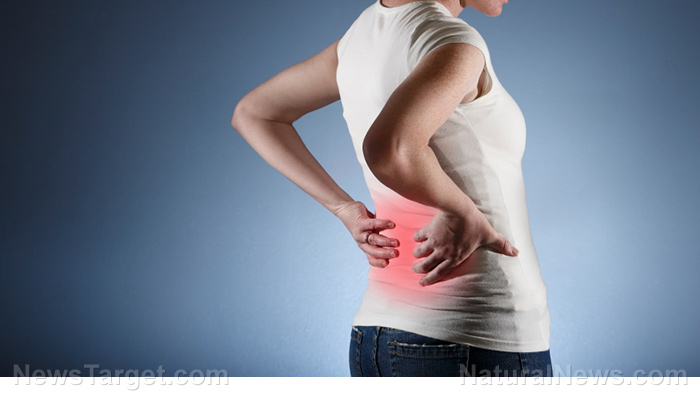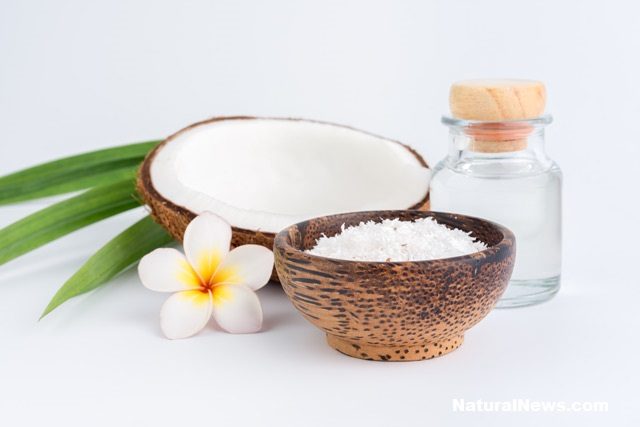Supplementing with vitamin D shown to reduce chronic lower back pain
07/05/2018 / By Carol Anderson

Back pain is something everyone experiences at one point, and it’s something we wouldn’t like to endure all the time. It’s said that Americans alone spend $50 billion annually for treatment and expensive pharmaceutical drugs. Fortunately, researchers found a more natural – and way cheaper – solution to this growing problem.
A study published in Pain Physician suggests that adequate vitamin D supplementation can help reduce and relieve chronic lower back pain.
To prove the connection between this nutrient and back pain, researchers invited 68 adults to participate in the study. All of them reported suffering from lower back pain for at least three months, and are not getting any better even with medication and physical therapy.
Before the experiment, researchers found that the volunteers’ average level of vitamin D was only at 12.8 ng/mL (nanograms per milliliter). This number was much lower than the 40 ng/mL recommended amount of vitamin D to boost optimal health.
So, for the next eight weeks, participants were given 60,000 IU of vitamin D three times a week, increasing their average levels to 36.07 ng/mL. Meanwhile, to measure their level of pain and disability, a pain visual analog scale was used before, during, and at the end of the study.
Results showed that after the subjects received higher doses of vitamin D, their pain and disability levels significantly decreased. Dr. Babita Ghai, M.D., D.N.B, lead author of the study, commented, “Our findings provide a reasonable justification for advising dietary supplementation as well as therapeutic medication to achieve normal vitamin D levels in patients with musculoskeletal pain.”
She added that the natural nutrient has anatomic, hormonal, neurologic and immunologic influences on pain expression, and encouraged further studies on the correlation between vitamin D and lower back pain. (Read: Vitamin D deficiency is widespread among U.S. population, expectant mothers are deficient and giving birth to deficient infants.)
Previous studies revealed same results
Back in 2015, a research was conducted involving 328 Indian patients with chronic lower back pain. The researchers found that the volunteers were also lacking in vitamin D – 86 percent of the men and 83 percent of the women had lower than normal levels.
Of the participants, 66 percent of the men and 58 percent of the women had vitamin D levels below 20 ng/mL, which is a clear indication of vitamin D deficiency. This hinted at the connection between vitamin D levels and chronic lower back pain among Indians. They also noted that the nutrient has an important role in bone metabolism and neuromuscular function.
Another study was done by Mayo Clinic to see the association of musculoskeletal pain with vitamin D deficiency. It involved 150 patients suffering from musculoskeletal pain, aged between 10 and 65.
The researchers were surprised to find out that 93 percent of the volunteers had low levels of vitamin D, with 28 percent of them found to be severely deficient. Because of this finding, the researchers suggested that people suffering from musculoskeletal pain be screened for vitamin D deficiency.
Signs of vitamin D deficiency
How do you determine if you, or someone in your family, may be lacking in vitamin D? Check the list of symptoms below:
- Often getting sick
- Always feeling tired or overfatigued
- Experiencing bone and back pain
- Going through depression
- Slow healing of wounds
- Bone loss
- Hair loss
- Muscle pain
Learn more about the importance of vitamin D to your overall health by visiting VitaminD.news.
Sources include:
Tagged Under: bone metabolism, chronic back pain, lower back pain, musculoskeletal pain, natural cures, natural healing, Natural Treatments, neuromuscular function, nutrients, nutrition, pain relief, remedies, research, supplements, vitamin D, vitamin D deficiency, vitamins



















